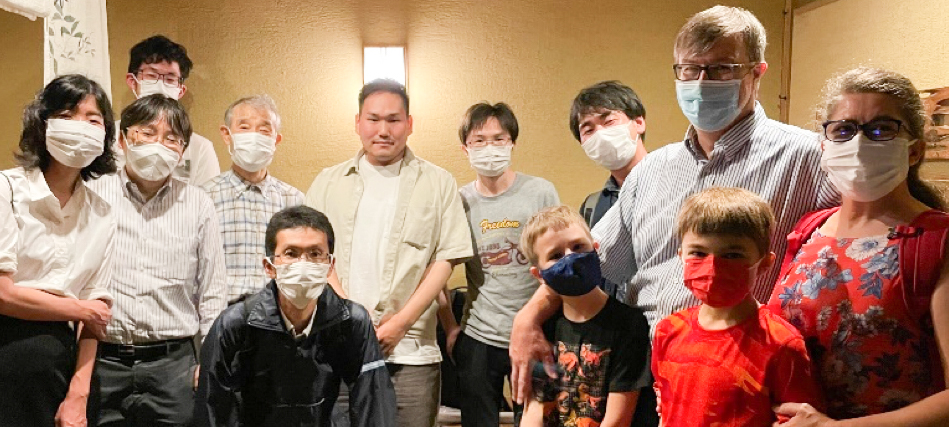ISSP stay report of Prof. Matthias Batzill
Matthias Batzill
University of South Florida
I have been honored to serve as a visiting Professor at ISSP. ISSP is a world leading research institution in Solid State Physics and to be part of it, even if only for a short time, has been a real privilege. From the start, the international liaison office has been wonderful in providing all the support I could have wished for planning my visit. Once we arrived in Japan, we received a warm welcome by Prof. Hasegawa and his group. All this, and the convenient accommodation at Kashiwa lodge made it easy for us to settle in, in no time.
Unfortunately, my stay at ISSP was delayed due to COVID restrictions. Moreover, due to other obligations, I could not extend my visit beyond the original departure date, which meant that I could be at ISSP only for a little more than two months. I thank ISSP to be flexible in these unprecedented times and permitted such an abbreviated tenure. However, this shortened visit also meant that less could be accomplished in the lab.

I brought van der Waals heterostructures and monolayer materials that were synthesized by MBE in my lab at the University of South Florida to ISSP. We were planning to characterize proximity effects and local magnetic properties by spin polarized low temperature STM. However, we faced challenges in re-establishing the clean surfaces required for the atomic scale studies. I was impressed by the thoroughness and commitment of Research Associate Masahiro Haze to succeed against all the challenges. In the end, although we could not obtain the desired results during my truncated visit, we learned about sample treatment and what is required for future experiments to succeed. Thus, I believe the visit was fruitful in terms of better understanding the experimental details. Armed with this insight and my broader appreciation of the research goals in Prof. Hasegawa’s group we aim at expanding our collaborations and providing more appropriate samples. As known from the start, there exist exciting synergies between the surface science and materials synthesis efforts in my group and the world class low-temperature/high magnetic field scanning tunneling microscopy facilities for probing local quantum properties at ISSP. The visit at ISSP helped us in formulating new ideas and considering opportunities in designing of van der Waals quantum heterostructures. Back at my home institution in Florida, this will lead to efforts in synthesizing such nanostructures that can be investigated with the know-how and instrumentation available at ISSP. Overall, while there has not been any tangible research result from my visit yet, I am very pleased with the intellectual impact, and I am confident about our continuing collaboration.
In addition to my interactions at ISSP, I had opportunities to travel in Japan and give seminars and visit research labs at University of Tokyo (Hongo campus), Tohoku University, and Kyoto University. I was impressed by the Japanese hospitality wherever I visited and enjoyed learning first-hand about research in Japan.
Finally, I was also fortunate to be able to share my visit with my family and together enjoy Japanese landmarks and culture at weekends. From climbing Mount Tsukuba, hiking in Hakone National Park, to seeing the Great Buddha (Daibutsu) of Kamakura, there is no question that this summer will leave a lasting impression on me and my family.
In conclusion, this visiting Professor program is a fitting approach for a world-renowned institution like ISSP to further international collaborations and facilitate scientific communications. I applaud ISSP for having the vision of establishing this program and thus support scientific and cultural exchanges between Japan and the rest of the world.


